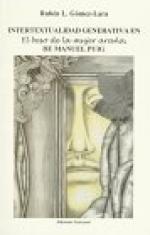|
This section contains 2,959 words (approx. 10 pages at 300 words per page) |

|
SOURCE: “Manuel Puig's Boquitas pintadas: ‘True Romance’ for Our Time,” in Critique: Studies in Modern Fiction, Vol. 23, No. 1, 1981, pp. 37-44.
In the following essay, Thompson discusses Puig's use of popular forms in Boquitas pintadas and how the substance of the texts subverts those forms.
Manuel Puig's second novel, Boquitas pintadas (Heartbreak Tango) (1969), is generally considered a follow-up to or an elaboration on techniques which he first experimented with in La traicion de Rita Hayworth (Betrayed by Rita Hayworth) (1968). Chief among these techniques are the devices which have been called “cinematic”1 and multiple narrative styles and points of view in ever-changing combinations. Partly because of his willful eclecticism but more because of his willingness to associate himself and his work with such popular art forms as serialized pulp magazine fiction, the tango, and soap opera,2 Puig has been called a “pop” writer. The popularity of his novels, both in...
|
This section contains 2,959 words (approx. 10 pages at 300 words per page) |

|


